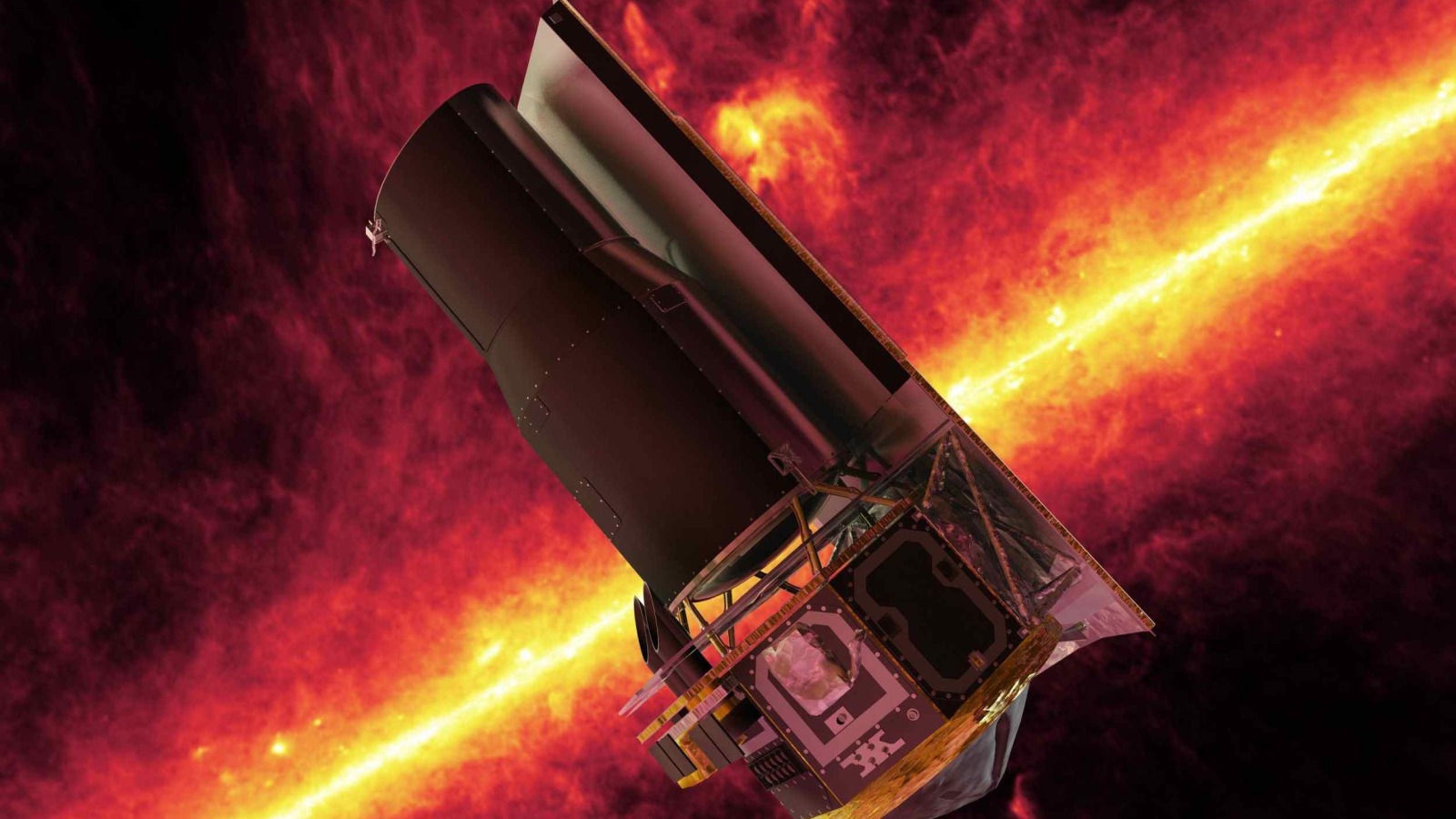Bold proposal aims to bring NASA's deep-space Spitzer telescope back to life
'This would be the most complex robotic mission ever performed by humanity.'

The U.S. Space Force wants to bring a venerable NASA space telescope out of retirement.
An early-stage study seeks to resurrect the Spitzer Space Telescope, which was shut off in 2020 after 17 years of research exploring heat signatures of the universe. The Space Force awarded startup Rhea Space Activity $250,000 to explore the idea, in partnership with several astronomical heavyweights.
"This would be the most complex robotic mission ever performed by humanity," astrophysicist Shawn Usman, Rhea's CEO, said of the proposal in a company statement on May 10.
Given that Spitzer is two astronomical units (sun-Earth distances) from our planet, Usman said the work would be even more complex than the five space shuttle missions that serviced the Hubble Space Telescope between 1993 and 2009. (Hubble is still active, and NASA is considering potentially servicing it again with new tech.)
Related: New private plan to rescue Hubble Space Telescope may also target space junk
Spitzer's pioneering work in infrared light allowed the telescope to peer at the universe from deep space. The telescope's extreme distance from our planet was required to keep Spitzer cool enough to find heat signatures of distant objects, and to peer through dust in stellar nurseries.
NASA's James Webb Space Telescope, which launched in December 2021, also performs infrared observations in deep space. In fact, NASA shut down the healthy Spitzer mainly to free up resources for Webb. However, Spitzer not only observed in different wavelengths than Webb, but its location provides another position from which to observe the infrared universe — assuming it could be reactivated.
Get the Space.com Newsletter
Breaking space news, the latest updates on rocket launches, skywatching events and more!
The early-stage study proposes a "Spitzer Resurrector" mission that would launch in 2026 and voyage to the silent telescope. Rhea's tech would "restart Spitzer, confirm that it has been restored it to its original performance capabilities, and ... remain nearby to act as a high-rate data relay to Earth, thus restoring Spitzer to its full efficiency," the company's statement read.
The Space Force's innovation arm, SpaceWERX, is managing the Small Business Technology Transfer Phase 1 contract for the proposed Spitzer Resurrector mission. Rhea's partners on the project are the Smithsonian Astrophysical Observatory, the Johns Hopkins University Applied Physics Laboratory, Blue Sun Enterprises and Lockheed Martin.
Related: NASA's Spitzer Space Telescope is no more. Here's what's next for infrared astronomy
Rhea, which is based in Washington, D.C., describes itself as a "developer of astrophysics technology designed to support national security objectives," particularly in fields such as infrared satellites, artificial intelligence and small satellites.
While Rhea has yet to launch a mission, it does have several projects in the works. One of the most prominent is Lunint (Lunar Intelligence), which is backed by venture capital firm SpaceFund and could launch as soon as 2024.
Lunint aims to provide situational awareness for activity around the moon to ferry back to the U.S. military and its allies. The moon is expected to be a hub of activity shortly, between the NASA-led Artemis program and numerous private small landers scheduled to touch down in the mid-2020s and beyond. As such, the Space Force has said it wants to send missions to cislunar space for more surveillance.
Follow us on Twitter @Spacedotcom or Facebook.
Join our Space Forums to keep talking space on the latest missions, night sky and more! And if you have a news tip, correction or comment, let us know at: community@space.com.

Elizabeth Howell (she/her), Ph.D., was a staff writer in the spaceflight channel between 2022 and 2024 specializing in Canadian space news. She was contributing writer for Space.com for 10 years from 2012 to 2024. Elizabeth's reporting includes multiple exclusives with the White House, leading world coverage about a lost-and-found space tomato on the International Space Station, witnessing five human spaceflight launches on two continents, flying parabolic, working inside a spacesuit, and participating in a simulated Mars mission. Her latest book, "Why Am I Taller?" (ECW Press, 2022) is co-written with astronaut Dave Williams.









